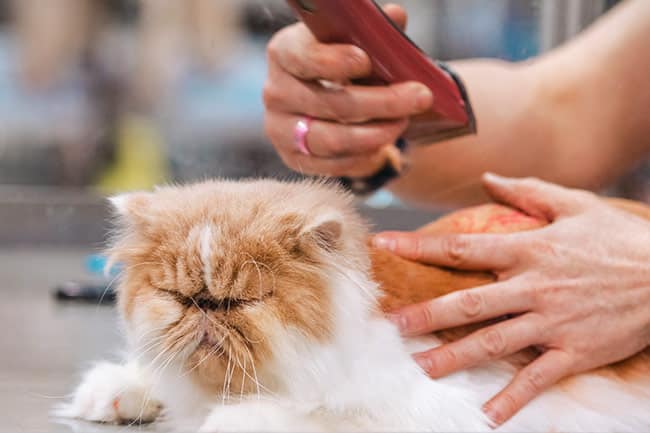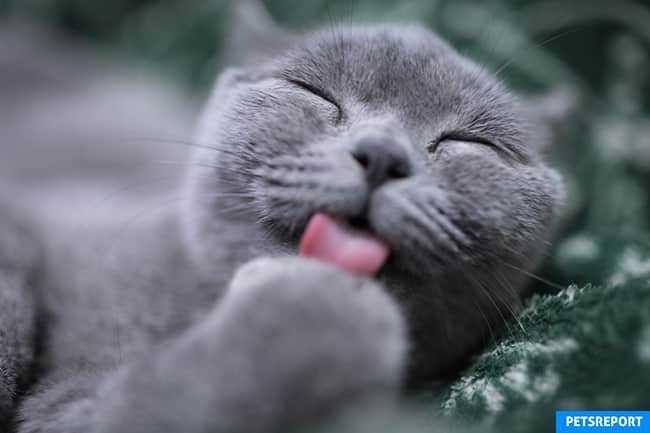Hairballs can be a nuisance, especially when expelled on expensive carpets or hard-to-clean surfaces! Don’t get me wrong, we love our cats — but it can’t be denied that dealing with these slimy, grimy cat vomits can be quite an unpleasant experience.
Cat owners often think that hairballs are a typical or common “byproduct” of our feline friends, but are they? Here, we will be answering frequently asked questions about cat hairballs. Read on and find out how you can properly treat and prevent these jarring kitty deposits — or at least keep them under control.
What are cat hairballs?
Cat hairballs are the slimy, soggy, mucus-covered masses of hair cats vomit occasionally. You’ll know when your cat is about to expel a gross tubular-shaped wad of hair when you hear them hacking, gagging, or making vomiting noises.
Hairballs may look disgusting, but they are formed due to your cat’s overdelicate grooming routine. When your cat grooms themselves, their unique “velcro-like” tongue will catch loose hair, which is swallowed. Most of the swallowed hair will pass through their gastrointestinal tract with no complications and be expelled later as feces.
However, there are instances where cats groom themselves excessively; therefore, their stomach accumulates and collects an unusually large mass of fur, which then develops into a hairball. With no other way for the cat’s body to release this unwanted mass, It will then be ejected through vomit.
Are cat hairballs normal?
To answer this question straightforwardly: no. Most cats expel hairballs every once in a while, whether they have long or short fur, but it doesn’t necessarily mean that it’s normal. When hairball vomiting becomes frequent, it is a subject of concern.
If the vomiting of cat hairballs becomes a daily or weekly occurrence, bring them to your vet immediately to examine possible complications or medical issues.
PetsReport.com
Note that there are cases where hairball masses become too big, causing life-threatening obstruction in the gastrointestinal tract. Be cautious of the following hairball symptoms that could signal gastrointestinal blockage:
- Frequent vomiting or gagging without producing a hairball
- Lack of appetite
- Weakness or lethargy
- Digestion problems such as diarrhea and constipation
3 ways you can prevent cat hairballs:
When it comes to your pet’s health and wellbeing, “prevention is better than cure.” Here are some ways to prevent cat hairballs and medical issues that may potentially arise:
1. Control compulsive and excessive grooming
Excessive grooming is one of the most common triggers of hairball buildup. If you observe your cat grooming excessively, try to interrupt their session with feeding, petting, or even a quick playtime.
2. Brush your cat’s fur regularly
Developing a habit of combing or brushing your cat’s fur daily can help remove loose hair. Brushing reduces the amount of hair your cat swallows when self-grooming.
Using special grooming tools and products to minimize and remove hair tangles is an excellent preventive method to avoid complications. In addition to addressing your hairball problem, spending time each day to brush your cat’s coat will also strengthen your bond with your feline friend.

3. Consult with your vet
Hairballs are not usually a cause for panic. So there’s no need to run to the vet once it happens. Nevertheless, It’s always a good idea to seek veterinary advice even before anything unpleasant occurs.
A quick medical examination will allow your vet to know the frequency of your cat’s hairball, grooming habits, and potential triggers. After medical examination, your trusted vet can provide recommendations best fit your cat. They might recommend special diets and supplements that can prevent hairball buildup or other products that can give your cat’s stomach the extra lubrication needed to aid digestion.
With regular consultation, you can ensure that signs of an illness can be caught at the earliest stage, keeping your cat away from danger.
Conclusion
Part of being a cat owner is dealing with all the unpleasantries that come with it — hairballs included. While cat hairballs are often not something to worry about, it’s always better to be two steps ahead regarding your pet’s health and wellbeing. If your instinct tells you something is wrong, contact your vet immediately to rule out your suspicions.


Leave A Comment